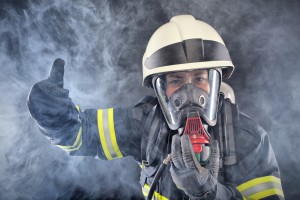Chimney Fires are a a real threat and firefighters want you to be aware :
Anyone who has the benefit of having a fireplace in their home can enjoy the warmth and glow of a fire during the bitter months of winter, enjoying a ritual handed down through the generations. Warmer temperatures are certainly coming to an end, and we need to start thinking about the condition of our chimneys and wood stoves. Times like this are perfect for having your chimney inspected and cleaned. Proper care of your chimney can eliminate the chances of having a chimney fire, causing damage to your flue, masonry work, and worst-case a fully involved house-fire. There are an estimated 25,100 chimney fires resulting in 30 deaths per year nationwide.
How Chimney Fires Start:
Wood that burns in a fireplace produces a number of gases that move up the flue and out the chimney, cooling as it exits the top. As these gases cool, condensation forms around the flue catching the smoke and causing a dry, puffy material to build up along the edges called creosote. Depending on the situation, some chimneys can also produce a sticky, tar-like residue. Creosote can multiply over time constricting airflow and building up heat. As temperatures rise inside your flue, creosote buildup reaches it flash-point (the temperature which a product ignites into open flame) and spreads up and out the top of the chimney. With temps reaching over 2,000 degrees, masonry begins to crack and break apart exposing small cracks leading to the framing in your home and up in the attic, resulting in a house fire.
How to Prevent Chimney Fires:
The number one way to prevent a fire is having your chimney professionally cleaned and inspected annually by a Qualified Chimney Professional. This will insure that all parts are in working order and cleaned properly, but there are some do-it-yourself ways to help prevent creosote buildup from occurring.
- Use seasoned firewood, green wood contains moisture which boosts creosote buildup.
- Build smaller, hotter fires that burn completely. This reduces smoldering.
- Try to prevent over-packing your fireplace. Fewer pieces of wood allow for better airflow and hotter fires, reducing smoke byproducts from forming.
- Never burn paper, cardboard, or other trash in your fireplace.
These simple maintenance steps will help you in having a safe chimney, year after year.
Call Now for your Qualified Inspection and Sweep! 844-SWEEP-NOW












